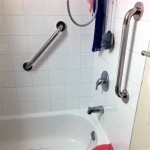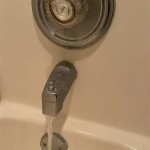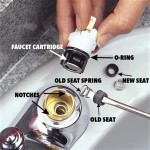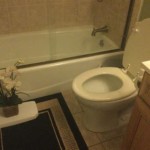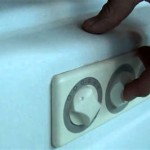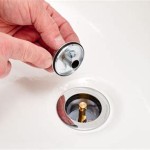Tools to Remove a Broken Bathtub Drain
A broken bathtub drain can be a frustrating and inconvenient problem. Whether it's a clogged, stripped, or completely broken drain, the inability to drain water from your bathtub can quickly make it unusable. Fortunately, with the right tools and a little effort, you can often remove a broken bathtub drain yourself. This article will discuss the various tools available, the steps involved in removing a broken bathtub drain, and tips for preventing future problems.
Essential Tools for the Job
The tools you'll need to remove a broken bathtub drain will depend on the type of drain you have and the nature of the breakage. However, there are several essential tools that are commonly used for this task:
- Channel-lock pliers: These pliers are essential for gripping and turning the drain assembly, especially if the drain nut is stripped or damaged.
- Adjustable wrench: This tool can be used to tighten or loosen the drain nut, depending on the severity of the breakage.
- Slip-joint pliers: These pliers are useful for gripping and turning smaller parts of the drain assembly, such as the overflow plate.
- Flat-head screwdriver: A flat-head screwdriver can be used to pry off the drain cover or remove screws holding the drain assembly in place.
- Phillips-head screwdriver: Some bathtub drains have screws that require a Phillips-head screwdriver for removal.
- Plumber's putty knife: This tool can be used to remove old sealant around the drain assembly.
- Work gloves: Wear gloves to protect your hands from sharp edges and potential debris.
- Safety glasses: Protect your eyes from flying debris.
Steps to Remove a Broken Bathtub Drain
The specific steps involved in removing a broken bathtub drain may vary slightly depending on the type of drain and the severity of the breakage. However, the following general steps can serve as a guide:
- Turn off the water supply: Locate the shut-off valve for the bathtub and turn it off completely. This will prevent water from flowing into the tub while you work.
- Remove the drain cover: Most bathtub drains have a cover that needs to be removed before you can access the drain assembly. Use a flat-head screwdriver or your fingers to pry off the cover.
- Remove the overflow plate: If your bathtub has an overflow drain, you'll need to remove the overflow plate. Use slip-joint pliers to carefully remove the plate, being careful not to damage the surrounding tub.
- Loosen the drain nut: Locate the drain nut, which is typically located underneath the drain assembly. Use channel-lock pliers or an adjustable wrench to loosen the nut. You may need to apply significant force, especially if the nut is stripped or rusted.
- Remove the drain assembly: Once the drain nut is loose, you can remove the entire drain assembly. Carefully pull the assembly upwards, taking care not to damage the tub or surrounding plumbing.
- Clean the drain opening: Before installing a new drain assembly, use a putty knife or other cleaning tool to remove any debris or old sealant from the drain opening.
- Install the new drain assembly: Carefully thread the new drain assembly into the opening and tighten the drain nut securely. Be sure to use plumber's putty or sealant to create a watertight seal around the drain assembly.
- Reinstall the overflow plate and drain cover: If applicable, reinstall the overflow plate and drain cover.
- Turn the water supply back on: Once the new drain assembly is installed, turn the water supply back on and check for leaks.
Tips for Preventing Future Problems
While a broken bathtub drain can be a frustrating experience, there are steps you can take to prevent future problems:
- Avoid using harsh chemicals: Harsh chemicals can damage the drain assembly and lead to future problems. Use natural drain cleaners or a plunger to remove clogs.
- Clean your drain regularly: Regularly cleaning your bathtub drain can help prevent clogs and keep it functioning properly. You can use a drain snake or a simple brush to clean the drain.
- Avoid pouring grease or hair down the drain: These substances can easily solidify and cause clogs in your bathtub drain.
- Consider using a strainer: Use a shower drain strainer to catch hair and other debris before they can clog the drain.
- Inspect your drain regularly: Periodically inspect your bathtub drain for signs of damage or wear and tear. If you notice any problems, address them promptly to prevent the issue from worsening.
By following these tips and using the tools described, you can successfully remove a broken bathtub drain and keep your bathroom functioning smoothly.

How To Remove Broken Bathtub Drain Without Special Removal Tool Cross Members

Broken Tub Drain Removal Solution

Plumbing How To Remove Old 1 3 8 Drain Strainer From A Bathtub Home Improvement Stack Exchange

Guide To Removing A Bathtub Drain Family Handyman

How To Remove Replace A Bath Tub Drain That Has Broken Out Cross Piece No Special Tools

Husky Tub Drain Removal Tool 410 075 0111

Husky Tub Drain Removal Tool 410 075 0111

Husky Double Ended Tub Drain Wrench 16pl0128 The Home Depot

6 Ways To Remove Stuck Bathtub Drain Rusted Won T Budge

Superior Tool 05255 1 5 Tub Drain Extractor Removes One And Original Version For
Related Posts

